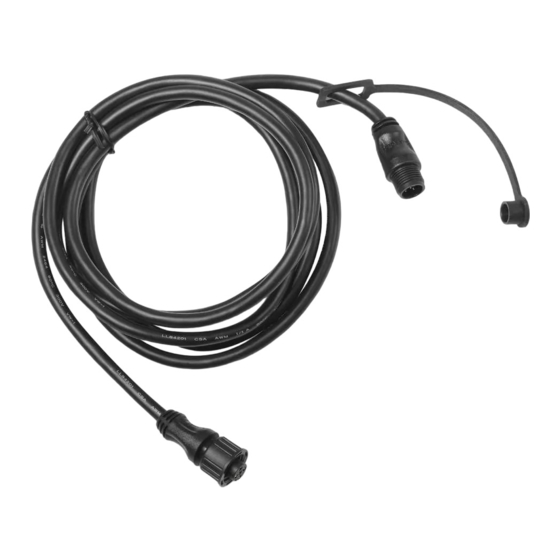Linear Backbone Construction
The backbone is the main communication path of the NMEA 2000 network, so it is extremely important to
construct the backbone properly. An improperly constructed backbone may prevent the network from
functioning, or you may experience unexpected performance.
The backbone consists of a combination of T-connectors and cables, terminated on both ends. All T-
connectors must connect to the sides of one another either directly or through a backbone cable extension.
The top of a T-connector is used to connect a device or power to the network only, and the backbone cannot
route through the top of a T-connector.
Female terminator installed correctly
The terminator must connect to the side of the last T-connector in the backbone.
NMEA 2000 devices and power
NMEA 2000 drop cables and network power cables must connect to the top of a T-connector, and never
to the sides.
Backbone cable
If needed, the backbone can be extended using a cable connected to the sides of a T-connector.
The maximum length of a single backbone cable is 100 m (328 ft.)
Male terminator
The terminator must connect to the side of the last T-connector in the backbone.
NMEA 2000 devices and power
NMEA 2000 drop cables and network power cables must connect to the top of a T-connector, and never
to the sides.
Male terminator installed incorrectly
The terminator must connect to the side of the last T-connector in the backbone, and cannot connect to
the top of a T-connector.
Female terminator installed correctly
Backbone cable installed correctly
T-connector installed incorrectly
T-connectors must connect to one another using the sides only, never the top.
6
NMEA 2000 Network with Correct Linear Backbone Construction
NMEA 2000 Network with Incorrect Linear Backbone Construction

